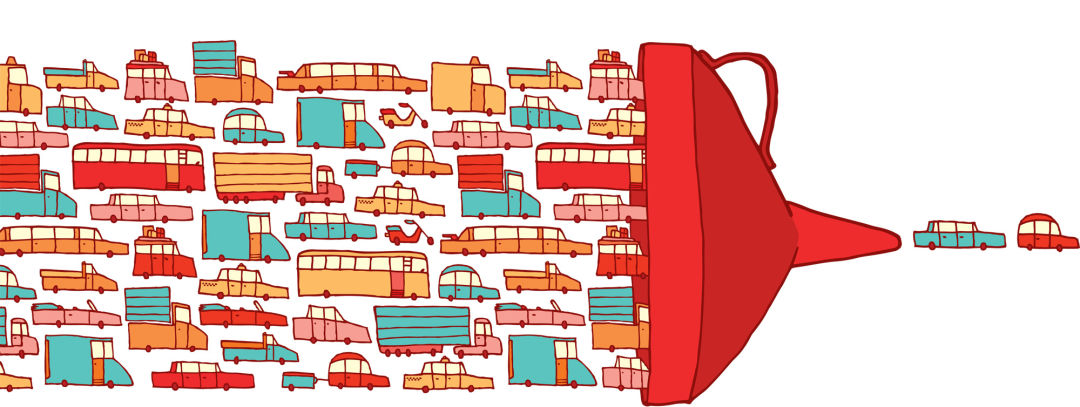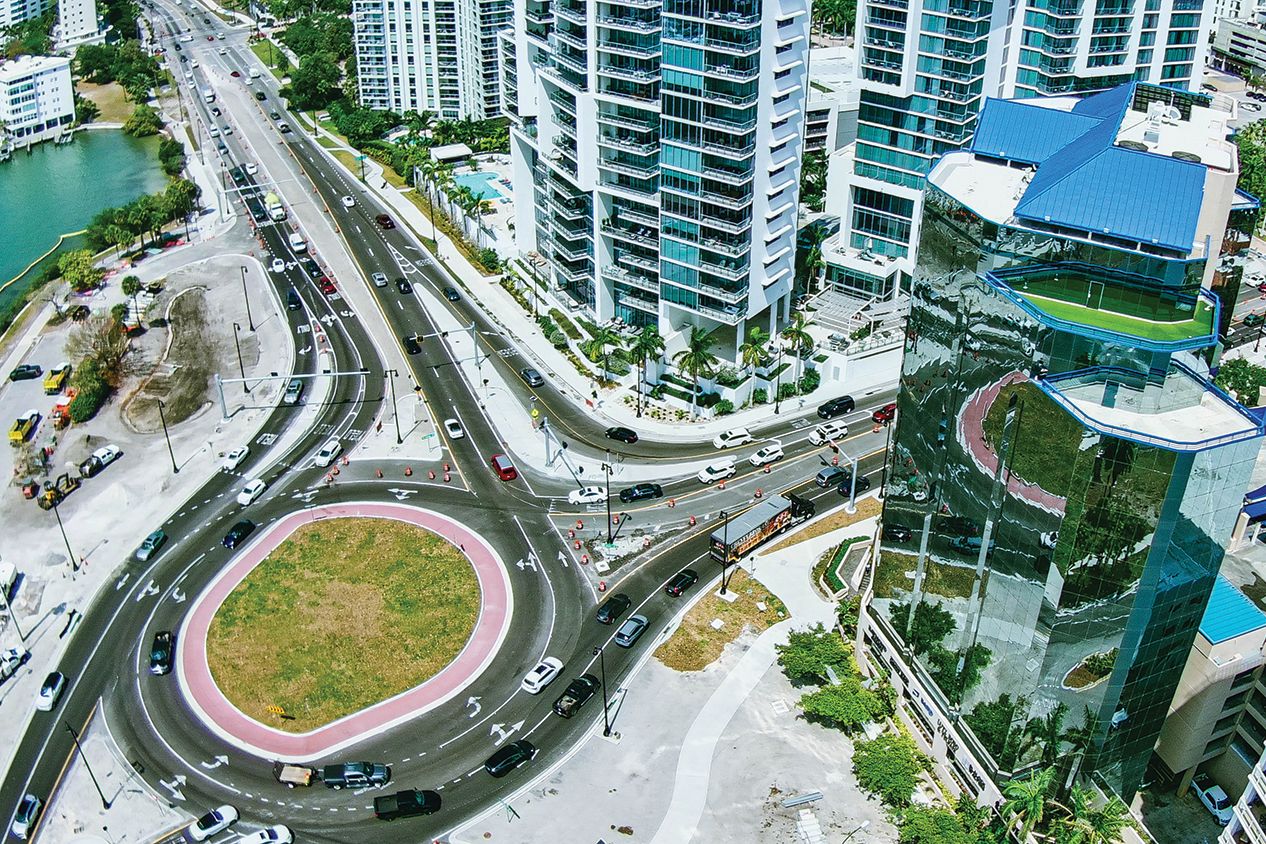Visitor Bureaus are Creating Strategies to Ease Drive Time in Season

Image: Shutterstock
According to Florida Department of Transportation data, in just the past five years, the average number of cars crossing the Ringling Causeway in a given day increased by 2,000, up to 35,000 a day. Traffic out to Anna Maria Island over the Anna Maria Island Bridge increased by 1,400 cars during that same period. And near the Cortez Bridge, average daily traffic shot up by 2,900 cars.
Mix that congestion with a flurry of new construction in urban areas and along the keys, plus lane closures forced by infrastructure upgrades, and you have a recipe for traffic chokeholds at key points, not to mention a ton of griping. The complaints run the gamut from the general (why do we need all these condos?) to the specific (why can’t I get to my Van Wezel show on time?). And they are often directed at tourists, whose numbers continue to grow year after year. In Sarasota County, tourist development tax collections totaled $3.3 million this March, up 3.6 percent from March 2015 and 11.5 percent from March 2014.
Manatee County tourist tax collections, meanwhile, hit almost $2 million this March, a 10.8 percent increase from 2015. The intensity of the tourist season is at odds with how the county has branded itself as a “detox, low-rise, low-key” area, in the words of Bradenton Area Convention and Visitors Bureau executive director Elliott Falcione. “One of our brand elements is our promise, ‘Come to Anna Maria Island and leave your everyday life behind,’ and if it’s a congested environment, then we’re not selling the right promise,” Falcione says.
With that in mind, Falcione’s office is withdrawing some of its promotional spending from the spring months and shifting it to the summer and fall, when tourism traditionally dips. Market research predicts a 3 percent to 4 percent growth in Manatee County visitation in spring 2017, but Falcione says he’d be content with flat numbers or even a slight decrease, as long as summer and fall numbers increase in turn. Falcione says those out-of-season visitors could stay longer, too.
Of course, Falcione’s plan depends on steady national growth. If the larger economic picture deteriorates, “We may need to quickly shift dollars back to the spring season,” he says.
Visit Sarasota County also is taking complaints about congestion seriously. President Virginia Haley says she hears the laments loud and clear: “Our head’s not in the sand.”
But what can be done? The Visit Sarasota County board recently tasked Haley and her staff with researching what kinds of alternative transportation tourists might actually use. Scooters, jitneys and pedicabs can get tourists around Siesta Key more quickly than cars, while water taxis might be an effective way to get people from downtown Sarasota to the keys. A shuttle or trolley system perhaps could work for downtown Sarasota.
Overall, consumers are increasingly looking for destinations where they don’t need to rent a car to get around, Haley says. But the key is devising a system that’s easy to use for people who aren’t familiar with the area. Streetcar systems in cities like Portland, Oregon, for example, are instantly recognizable and simple to hop on.
Consumers here are already using ride-share apps like Uber and Lyft. Those products might not take cars off the road, but they do eliminate cars circling the city hunting for parking spaces. The City of Sarasota opened its State Street Parking Garage last year and is planning a new structure that will add 334 spaces to St. Armands Circle. Construction will begin in January 2018. Those additions might make parking easier; they also encourage more people to drive.
Locals may not like it, but the spike in local traffic since the end of the Great Recession hasn’t yet damaged the tourist experience. According to Visit Sarasota County surveys, 99 percent of visitors were “very satisfied” or “satisfied” with their visit this spring, up by 2 points from last year. Ninety-seven percent of those visitors also plan to return. It’s hard to improve on those numbers, but Haley wants to head off any potential dip in satisfaction: “We don’t want to wait for a drop.”



